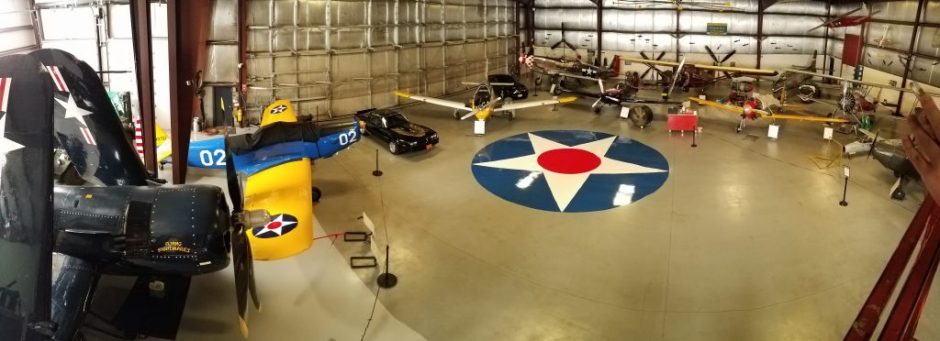Beech AT-11 Kansan
Used to train bombardiers during World War Two, the design was based on the popular Model 18 “Twin Beech” which was very popular as a fast, comfortable, business transport.
Civilian registration: N64463
Manufacturer’s serial: 4534
Ex-military serial: 42-37538
Wingspan: 47 feet 8 inches
Length: 34 feet 2 inches
Height: 9 feet 8 inches
Engine: two Pratt & Whitney R-985-AN-1 Wasp Junior nine-cylinder radial 450 hp each
Seating capacity: 6 (pilot + five passengers)
Speeds top: 215 mph cruise: 200 mph landing: 100 mph
G limits: +3.8 – 2
Ceilings cruise: 5,000 feet (as flown today) maximum: 21,200 feet
Range: 910 miles
Fuel capacity: 200 gallons
Fuel consumption: 45 gph
Weights gross: 8,195 lbs empty: 5,600 lbs
Armament:
two .30 inch machine guns mounted in dorsal fuselage turret 10 100 lb bombs
Number built: 5,204 military versions, including 1,178 AT-11s
Before there was an AT-11, there was Beech Aircraft Company
of Wichita, Kansas. For decades, the nickname “Beechcraft” applied
to all Beech designs, starting with the Model 18, which flew for the first time in January 1937. The 18 was soon nicknamed the “Twin Beech.”
First flights were made by TWA pilots James N. Peyton and Jack Thornberg. Peyton noted, “This aircraft was outstanding in its class.
It exceeded all its estimated performance figures.” Thornberg said,
“The ‘Twin Beech’ was the greatest airplane of its kind I have ever flown.”
In 1939, the Republic of China ordered 20 Beech 18s modified
to serve as bomber trainers equipped with clear plastic noses,
a gun turret on the top of the fuselage, and a machine gun mount
placed in the floor of the rear fuselage. The modifications included
a bomb bay, which held up to twenty 25 lb bombs.
The first US military orders for the type (designated C-45) were placed in 1940. In 1941, General Henry (“Hap”) Arnold visited the
Beech aircraft factory and placed the first order for trainer versions
of the aircraft to be used by the US Army Air Forces (USAAF).
Using the same basic airframe other US versions were
manufactured for the USAAF as the AT-7 Navigator, C-45
Expeditor, F-2 (reconnaissance), the US Navy as the JRB
(transport) and SNB (trainer). Military forces, including those
of Canada, Turkey, The Netherlands, China and US, purchased
5,204 examples of the type.
Most US-trained pilots, bombardiers, air gunners and navigators flew AT-11s before joining operational units.
Of the 1,178 built during World War Two, fewer than 10 AT-11s fly
today in their original configuration.
Sponsored by George Alarm Company Springfield, Illinois 217-525-1335
